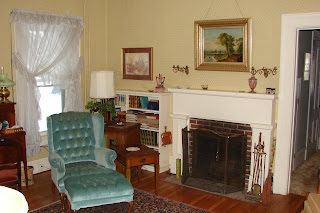A Little Lindley Railroad History
Photo from 6/13/ 1954 Sunday Telegram
One of the last NYC trains - near Leland Harris farm
"Building of the Corning and Blossburg Railroad"
The building and operation of railroads was "in the beginning. " In 1831 the first railroad in the State,and the second to be built in the United States ,was opened from Albany to Schenectady. The rudely constructed line demonstrated the advantages of the new means of communication. The Corning Company had surveys made and ascertained that a railroad could be constructed to the coal-region at Blossburg ,cheaper than a canal could be constructed ,and that coal could be brought to their docks on the bank of the Chemung for reshipment in canal boats ,cheaper by rail than it could be floated down the Tioga in flat boats or arks. A charter was obtained from the State of New York ,for a railroad from Corning to the stateline at Lawrenceville ,a distance of 15 miles. From that point to Blossburg, the line was built under a Pennsylvania charter , by Philedelphia capitalists. The Pennsylvania section of the Corning -Blossburg railroad was first known as the Tioga Coal ,Iron Mining and Manufacturing Company Railroad; next the whole line was known as the Corning and Blossburg Railroad, the next change in the name being the Blossburg and Corning Railroad, and later it was known as the Tioga Railroad.
The railroad was cheaply built. To avoid the expense of making fills and digging cuts,the roadbed extended along the base of the hills,making many turns to preserve the grade,and where it was necessary to cross the flat lands of the lower level timber trestles and driven spiles were used,to support the cross-ties ,timber stringers and rails of strap-iron that composed the railroad proper.
The railroad began operation in 1839. Its only locomotive ,a small affair ,manufactured at Albany and brought to Corning on, or in a canal boat. For a time,passenger and freight cars were made in Corning . For a time,this train had absolute right of way,under any and all circumstances,whether coming or going-for there was but one locomotive. When the second locomotive was secured, trains were run "by guess",when off schedule, for there was no telegraph service. Much steam was used in tooting the high -keyed whistle of goodly size, as the cautious engineer "felt his way"on approaching a sharp curve and rounding a point of land that hid from his view a stretch of track ahead. Reverse curves and intervening points of hills and mountains were too numerous to mention. It was the practice of the engineer to move with caution on nearing a curve where the view ahead was obstructed ,and then "let 'er out" on the strait reaches - the condition of the track permitting. Until the summer of 1864,when the telegraph wire was strung along the right of way from Corning to Blossburg,and the stations at Corning, Presho, Lawrenceville ,Tioga and Blossburg had been" connected ", the time tables of the Tioga railroad -which invariably bore the legend "Issued for the Direction of Trainmen and not for the Information of the Public- gave a train headed for Corning the right of way when a train moving in the other direction was ten minutes late at the regular passing place. It was the duty of the engineer of a South-bound train to side track at any convenient switch and wait for the north bound train to pass. This might be a matter of only a few minutes, or of hours, or until a "runner" or a party of trackmen pumping a hand-car brought "orders". for a number of years train service was irregular.
Sounds like never a dull moment ride!!!!





Comments
Post a Comment